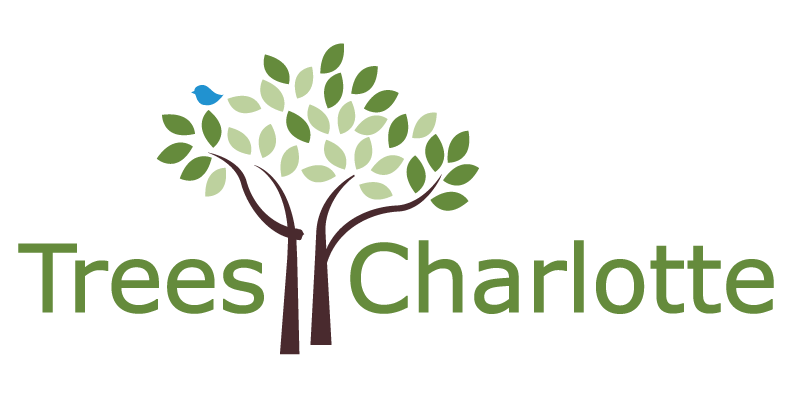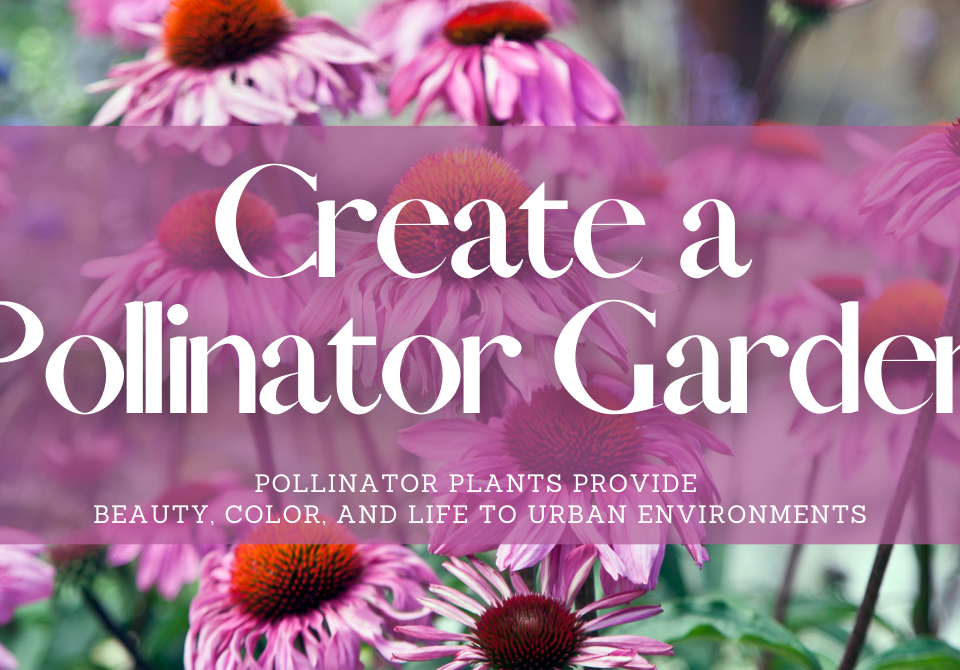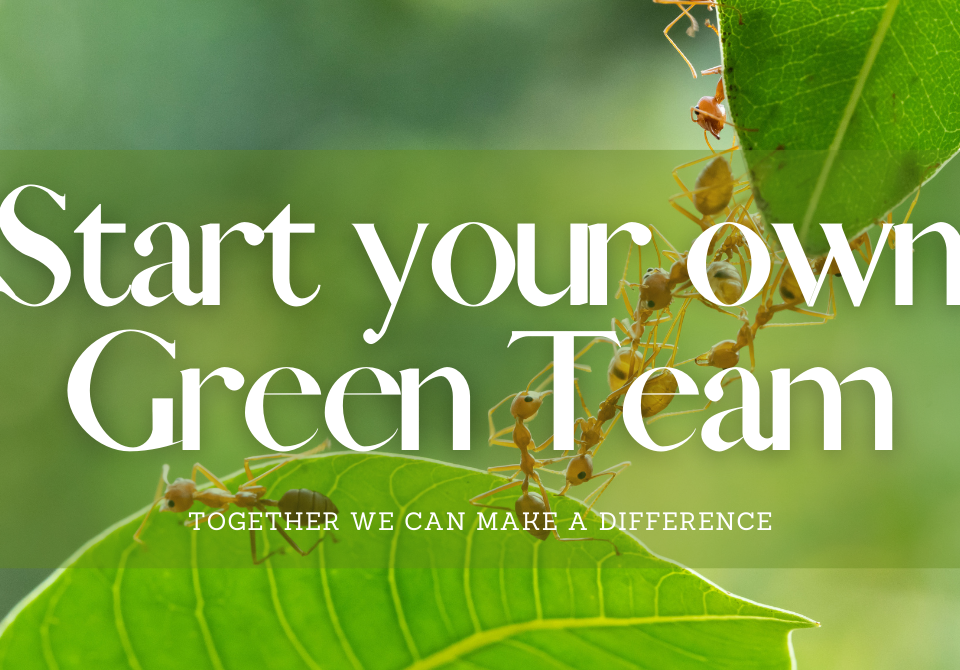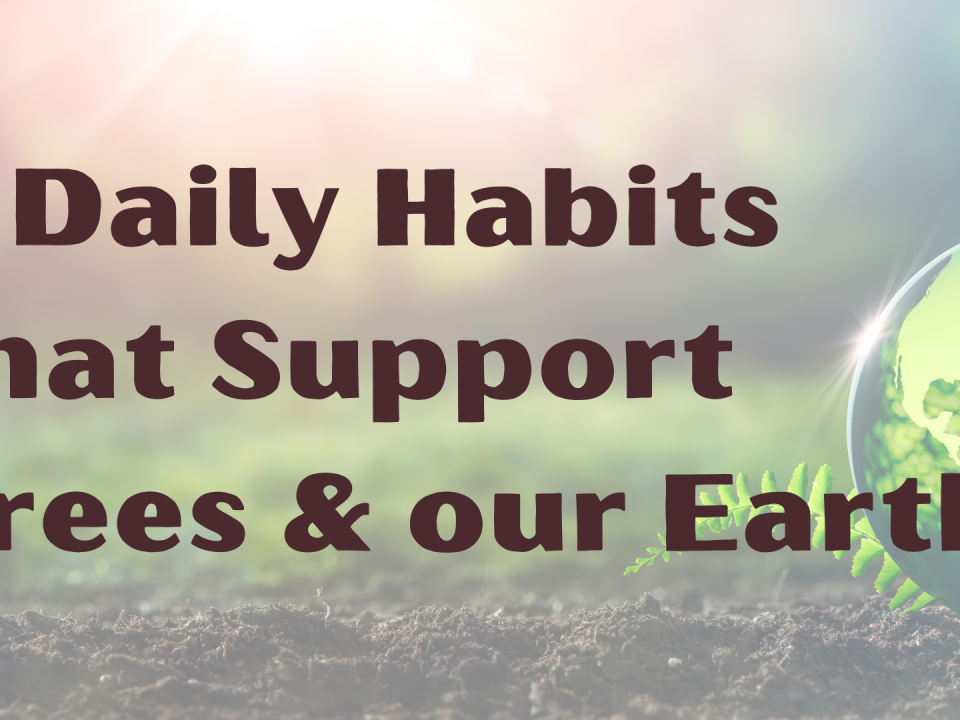Don’t Stress, Plant Trees!
Homeowners’ Guide to Tree Placement
10.02.20
Fall Leaflet now online!
10.11.20October 10th is World Mental Health Day!
And what better topic to discuss than how trees can vastly improve mental health.
You’re probably aware of the great things trees do for our physical health— filter out harmful air pollutants, produce nutritious fruit, provide shady canopied sidewalks to motivate you to walk or jog outside on hot summer days.
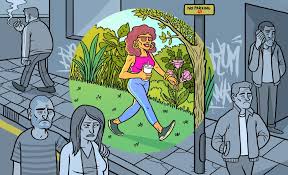
You may also have heard that enjoying nature is beneficial to our mental health. I could go on and on about studies that show how a walk in the forest reduces stress, or how people have reported more creativity and better focus after spending time around forested areas.
Although these studies are certainly useful, they aren’t my favorite when it comes to discussing trees and mental health. The separation of “city” and “forest” in these studies suggests that if you want to take a beat to focus on your mental health, you need to drive out to the middle of nowhere and hike into the woods. It’s unfeasible to do every day.
But, I want to give you all PROOF that by simply planting trees in your neighborhood, you can still improve your mental health, and you don’t need to drive all the way out to the Great Smokies to do so.
Here’s a list of studies that discuss how urban forests and neighborhood trees improve our mental state.
Trees and Stress:
- Trees change your brain function: A 2017 study found a positive correlation between tree canopy cover around a person’s home address and “the integrity of the amygdala” or the capability of the brain to handle stress.
- Trees change your hormones: This study found that there was a statistically significant relationship between quantity of green space in “normal, everyday settings” and the presence of cortisol (the stress hormone) in subjects’ saliva. This indicates that more trees in these “everyday setting” like neighborhoods and urban environments may be linked to a more relaxed brain.
Trees and Productivity:
- Looking at trees during breaks can boost work productivity: An Australian study observed the effects of green-roofs covered in trees on workplace productivity. They found that the subjects who took short breaks looking at the greenery had lower omission errors and were more consistent responding to tasks than subjects who viewed concrete during breaks. Hanging out with trees is an easy way to stay focused and efficient while working from home.
Trees and Children:
- Children with ADHD have less symptoms when playing around trees: A psychological study found that across all income groups and genders, hyperactive children who had play time in green spaces experienced reduced symptom severity than children who had play time in built indoor and outdoor settings.
- The effect of trees on children lasts a lifetime: A Danish study found that people who grew up with high levels of green spaces around their childhood homes from birth until age 10 were associated with lower risk of several psychiatric disorders as adults. Further, risks of mental illnesses for children who lived in low canopied areas was 55% higher than those in high canopied areas.
Trees and Exercise Mentality:
- The color green is calming, even during exercise: A medical study had subjects perform cycling tasks watching video footage of green, grey, and red edited rural cycling courses. They found that the “Green” course lowered mood disturbance and even lowered perceived exertion. So if you don’t like to exercise, try it in a park or a canopied neighborhood. It might feel easier and boost serotonin.
Let’s face it, 2020 has been a pretty rough year, and it’s taught us that your mental health needs to be taken as seriously as physical health. Just like you would remind yourself to drink enough water each day and eat a vegetable at every meal, try adding in “spend time around trees today.” The way you can manage anxiety and stress might be in your own backyard.
Citations (as they appear in post):
Kühn, S., Düzel, S., Eibich, P. et al. In search of features that co x/nstitute an “enriched environment” in humans: Associations between geographical properties and brain structure. Sci Rep 7, 11920 (2017). https://doi.org/10.1038/s41598-017-12046-7
Thompson, C. W., Roe, J., Aspinall, P., Mitchell, R., Clow, A., & Miller, D. (2012). More green space is linked to less stress in deprived communities: Evidence from salivary cortisol patterns. Landscape and Urban Planning, 105(3), 221-229. doi:10.1016/j.landurbplan.2011.12.015
Lee, K. E., Williams, K. J., Sargent, L. D., Williams, N. S., & Johnson, K. A. (2015). 40-second green roof views sustain attention: The role of micro-breaks in attention restoration. Journal of Environmental Psychology, 42, 182-189. doi:10.1016/j.jenvp.2015.04.003
Taylor, A. F., & Kuo, F. E. (2011). Could Exposure to Everyday Green Spaces Help Treat ADHD? Evidence from Children’s Play Settings. Applied Psychology: Health and Well-Being, 3(3), 281-303. doi:10.1111/j.1758-0854.2011.01052.x
Residential green space in childhood is associated with lower risk of psychiatric disorders from adolescence into adulthood. Kristine Engemann, Carsten Bøcker Pedersen, Lars Arge, Constantinos Tsirogiannis, Preben Bo Mortensen, Jens-Christian Svenning. Proceedings of the National Academy of Sciences Mar 2019, 116 (11) 5188-5193; DOI: 10.1073/pnas.1807504116
Visual Color Perception in Green Exercise: Positive Effects on Mood and Perceived Exertion Adam Akers, Jo Barton, Rachel Cossey, Patrick Gainsford, Murray Griffin, and Dominic Micklewright. Environmental Science & Technology 2012 46 (16), 8661-8666 Reid, C., Clougherty, J., Shmool, J., & Kubzansky, L. (2017). Is All Urban Green Space the Same? A Comparison of the Health Benefits of Trees and Grass in New York City. International Journal of Environmental Research and Public Health,14(11), 1411. doi:10.3390/ijerph14111411
Photo citation: How Nature Benefits Your Mental Health. (n.d.). Retrieved October 10, 2020, from https://www.vice.com/en/article/ppveky/why-is-nature-actually-good-for-your-mental-health
